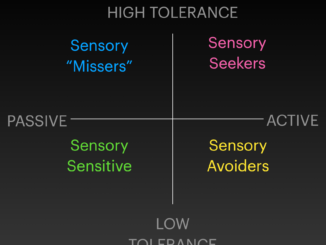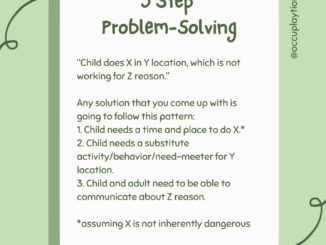I noticed that I was struggling with eating the food that I had available for myself for lunch. When I thought about needing to get up and get my lunch, I would think of excuses why I couldn’t or shouldn’t. I should keep working on what I’m working on. I’ll eat later. I’m not hungry.
I noticed that I was craving chips a lot. (This is rare for me, I’m usually someone who craves sweet foods.)
I noticed that when I wanted to eat a sweet food, I wanted something like an Oreo or a mini Butterfinger.
I wanted a snack late at night. Crackers were the only thing that sounded good to me.
All of these noticing observations in myself were a fraction of a second per day. It sounds more obvious, like a pattern, when I lay it all out in a post like this. But when I was noticing them, they were each individual, fleeting observations.
Again, I found myself struggling to eat the food I had brought myself for lunch. This time, I sat back and thought about all the things I’ve noticed recently.
I saw a pattern in all the things I noticed. I am craving things that are very crunchy. As soon as I thought about this, I realised it definitely sounded right. As soon as I put words to it for myself, mindfully and consciously, I was desperate for some crunchy foods.
I got myself some pea crisps, some raw carrots, and hummus for lunch (crunchy but still with some protein). I happily ate it for lunch several days in a row now.
It has taken me my whole entire life — childhood and adult — to be able to learn to notice these things in myself, to put them into sensory-aware terminology, to be able to act on them and help myself meet my own needs. Even a year ago, I would not have known how to do this. I would have never gotten past the stage where I struggle to eat my lunch and simply force myself to eat it, even if it made me feel sick. I would not have eaten a *quantity* that made myself feel sick, because I had spent the last few years learning about how to read my own hungry and full cues. But I would have forced myself to mechanically eat food that did not sound appealing because it was what I had. (I could probably write a whole post on my journey in my relationship with food!)
This is the kind of noticing, and raising to the level of awareness, and pattern recognition, that needs to be the foundation of neurodiversity-affirming OT practice in addressing sensory needs.
I can take it one step further, because I’m pretty well trained in this. I can recognize a pattern that is at an even higher level than just being contained within the sense of “eating”. I can recognize how my eating preferences right now also correlate with other things in my life. It is dark and cold outside, which makes me feel slow and gloomy. I have something in my life I’ve been anxious about for a little bit, which makes me feel avoidant and want to withdraw. All of the above have contributed to the fact that my alertness has been…not. I have been struggling greatly with alertness, and using things like loud music and lots of motion in order to stay alert through an entire workday. And you know what else is alerting to my body? …crunchy foods!
This is a much more complex conclusion to be able to come to. I’m not saying that someone else couldn’t learn to conclude these types of things based on their own body, but I am saying that it is far beyond the realm that I would expect a child I worked with to be able to come to. It is simpler and more straightforward to notice the need within one realm than it is to synthesise information from multiple realms. But, that is another skill and another level of awareness that people can keep working on, once they are informed and educated about how to listen to their bodies. Unfortunately, many people are trained throughout their entire childhood how to ignore and gaslight their bodies about what they are feeling, instead.



